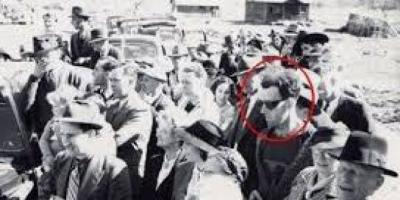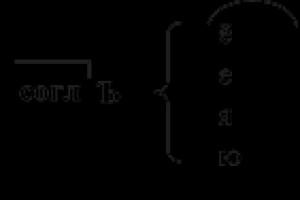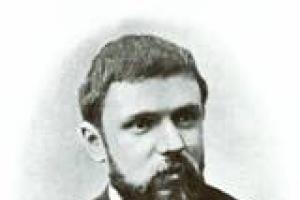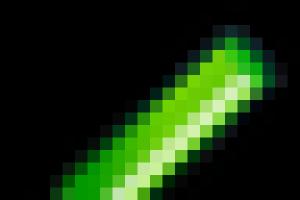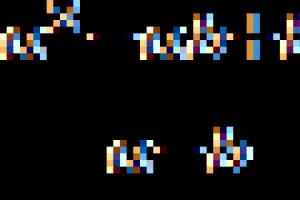Grigory Perelman. refusenik
Vasily Maksimov
In August 2006, the names of the best mathematicians on the planet were announced who received the prestigious Fields Medal - a kind of analogue of the Nobel Prize, which mathematicians, at the whim of Alfred Nobel, were deprived of. The Fields Medal - in addition to a badge of honor, the winners are awarded a check for fifteen thousand Canadian dollars - is awarded by the International Congress of Mathematicians every four years. It was established by Canadian scientist John Charles Fields and was first awarded in 1936. Since 1950, the Fields Medal has been awarded regularly personally by the King of Spain for his contribution to the development of mathematical science. Prize winners can be from one to four scientists under the age of forty. Forty-four mathematicians, including eight Russians, have already received the prize.

Grigory Perelman. Henri Poincaré.
In 2006, the laureates were the Frenchman Wendelin Werner, the Australian Terence Tao and two Russians - Andrey Okunkov working in the USA and Grigory Perelman, a scientist from St. Petersburg. However, at the last moment it became known that Perelman refused this prestigious award - as the organizers announced, “for reasons of principle.”
Such an extravagant act by the Russian mathematician did not come as a surprise to people who knew him. This is not the first time he has refused mathematical awards, explaining his decision by saying that he does not like ceremonial events and unnecessary hype around his name. Ten years ago, in 1996, Perelman refused the European Mathematical Congress prize, citing the fact that he had not completed the work on the scientific problem nominated for the award, and this was not the last case. The Russian mathematician seemed to make it his life’s goal to surprise people, going against public opinion and the scientific community.
Grigory Yakovlevich Perelman was born on June 13, 1966 in Leningrad. From a young age, he was fond of exact sciences, brilliantly graduated from the famous 239th secondary school with in-depth study of mathematics, won numerous mathematical Olympiads: for example, in 1982, as part of a team of Soviet schoolchildren, he participated in the International Mathematical Olympiad, held in Budapest. Without exams, Perelman was enrolled in the Faculty of Mechanics and Mathematics at Leningrad University, where he studied with excellent marks, continuing to win mathematical competitions at all levels. After graduating from the university with honors, he entered graduate school at the St. Petersburg branch of the Steklov Mathematical Institute. His scientific supervisor was the famous mathematician Academician Aleksandrov. Having defended his Ph.D. thesis, Grigory Perelman remained at the institute, in the laboratory of geometry and topology. His work on the theory of Alexandrov spaces is known; he was able to find evidence for a number of important conjectures. Despite numerous offers from leading Western universities, Perelman prefers to work in Russia.
His most notable success was the solution in 2002 of the famous Poincaré conjecture, published in 1904 and since then remained unproven. Perelman worked on it for eight years. The Poincaré conjecture was considered one of the greatest mathematical mysteries, and its solution was considered the most important achievement in mathematical science: it would immediately advance research into the problems of the physical and mathematical foundations of the universe. The most prominent minds on the planet predicted its solution only in a few decades, and the Clay Institute of Mathematics in Cambridge, Massachusetts, included the Poincaré problem among the seven most interesting unsolved mathematical problems of the millennium, for the solution of each of which a million dollar prize was promised (Millennium Prize Problems). .
The conjecture (sometimes called the problem) of the French mathematician Henri Poincaré (1854–1912) is formulated as follows: any closed simply connected three-dimensional space is homeomorphic to a three-dimensional sphere. To clarify, use a clear example: if you wrap an apple with a rubber band, then, in principle, by tightening the tape, you can compress the apple into a point. If you wrap a donut with the same tape, you cannot compress it to a point without tearing either the donut or the rubber. In this context, an apple is called a “simply connected” figure, but a donut is not simply connected. Almost a hundred years ago, Poincaré established that a two-dimensional sphere is simply connected, and suggested that a three-dimensional sphere is also simply connected. The best mathematicians in the world could not prove this hypothesis.
To qualify for the Clay Institute Prize, Perelman only had to publish his solution in one of the scientific journals, and if within two years no one could find an error in his calculations, then the solution would be considered correct. However, Perelman deviated from the rules from the very beginning, publishing his decision on the preprint website of the Los Alamos Scientific Laboratory. Perhaps he was afraid that an error had crept into his calculations - a similar story had already happened in mathematics. In 1994, the English mathematician Andrew Wiles proposed a solution to Fermat’s famous theorem, and a few months later it turned out that an error had crept into his calculations (although it was later corrected, and the sensation still took place). There is still no official publication of the proof of the Poincaré conjecture, but there is an authoritative opinion of the best mathematicians on the planet confirming the correctness of Perelman’s calculations.
The Fields Medal was awarded to Grigory Perelman precisely for solving the Poincaré problem. But the Russian scientist refused the prize, which he undoubtedly deserves. “Gregory told me that he feels isolated from the international mathematical community, outside this community, and therefore does not want to receive the award,” Englishman John Ball, president of the World Union of Mathematicians (WUM), said at a press conference in Madrid.
There are rumors that Grigory Perelman is going to leave science altogether: six months ago he resigned from his native Steklov Mathematical Institute, and they say that he will no longer study mathematics. Perhaps the Russian scientist believes that by proving the famous hypothesis, he has done everything he could for science. But who will undertake to discuss the train of thought of such a bright scientist and extraordinary person?.. Perelman refuses any comments, and he told The Daily Telegraph newspaper: “None of what I can say is of the slightest public interest.” However, leading scientific publications were unanimous in their assessments when they reported that “Grigory Perelman, having resolved the Poincaré theorem, stood on a par with the greatest geniuses of the past and present.”
Monthly literary and journalistic magazine and publishing house.
Henri Poincaré (1854-1912), one of the greatest mathematicians, formulated the famous idea of a deformed three-dimensional sphere in 1904 and, in the form of a small marginal note placed at the end of a 65-page article devoted to a completely different issue, scribbled a few lines of a rather strange hypothesis with the words: “Well, this question can take us too far”...
Marcus Du Sautoy from Oxford University believes that Poincaré's theorem- "This central problem of mathematics and physics , an attempt to understand what shape May be Universe , it’s very difficult to get close to her.”
Once a week, Grigory Perelman traveled to Princeton to take part in a seminar at the Institute for Advanced Study. At the seminar, one of the mathematicians at Harvard University answers Perelman’s question: “The theory of William Thurston (1946-2012, mathematician, works in the field of “Three-dimensional geometry and topology”), called the geometrization hypothesis, describes all possible three-dimensional surfaces and is a step forward in compared to the Poincaré conjecture. If you prove William Thurston’s hypothesis, then the Poincaré conjecture will open all its doors to you, and moreover its solution will change the entire topological landscape of modern science ».
In March 2003, six leading American universities invited Perelman to give a series of lectures explaining his work. In April 2003, Perelman made a scientific tour. His lectures become an outstanding scientific event. John Ball (chairman of the International Mathematical Union), Andrew Wiles (mathematician, works in the field of arithmetic of elliptic curves, proved Fermat’s theorem in 1994), John Nash (mathematician working in the field of game theory and differential geometry) come to listen to him in Princeton.
Grigory Perelman managed to solve one of the seven millennium problems And describe mathematically so-called formula of the universe , prove the Poincaré conjecture. The brightest minds have been struggling with this hypothesis for more than 100 years, and for the proof of which the world mathematical community (the Clay Mathematical Institute) promised $1 million. Its presentation took place on June 8, 2010. Grigory Perelman did not appear at it, and the world mathematical community “ Jaws dropped."
In 2006, the mathematician was awarded the highest mathematical award - the Fields Medal - for solving the Poincaré conjecture. John Ball personally visited St. Petersburg in order to persuade him to accept the award. He refused to accept it with the words: “ Society is unlikely to be able to seriously evaluate my work».
“The Fields Medal (and medal) is awarded once every 4 years at each international mathematical congress to young scientists (under 40 years of age) who have made a significant contribution to the development of mathematics. In addition to the medal, the recipients are awarded 15 thousand Canadian dollars ($13,000).”
In its original formulation, the Poincaré conjecture reads as follows: “Every simply connected compact three-dimensional manifold without boundary is homeomorphic to a three-dimensional sphere.” IN translation into a common language, this means that any three-dimensional object, for example, a glass, can be transformed into a ball by deformation alone, that is, it will not need to be cut or glued together. In other words, Poincaré assumed that space is not three-dimensional, but contains a significantly larger number of dimensions , and Perelman 100 years later proved it mathematically .

Grigory Perelman’s expression of Poincaré’s theorem on the transformation of matter into another state, form, is similar to the knowledge presented in Anastasia Novykh’s book “Sensei IV”: “In fact, this entire Universe, infinite for us, occupies a space billions of times smaller than the tip of the thinnest medical needles". And also the ability to control the material Universe through transformations introduced by the Observer from the controlling dimensions above the sixth (from 7 to 72 inclusive) (report “” topic “Ezoosmic lattice”).
Grigory Perelman was distinguished by the asceticism of his life and the severity of the ethical demands placed on both himself and others. Looking at him, one gets the feeling that he is just lives bodily in general with all other contemporaries space , A Spiritually in some other way , where even for $1 million they don’t go to the most "innocent" compromises with conscience . And what kind of space is this, and is it possible to even look at it out of the corner of your eye?..
Exceptional importance of hypothesis, put forward about a century ago by the mathematician Poincare, concerns three-dimensional structures and is a key element of modern research foundations of the universe . This riddle, according to experts from the Clay Institute, is one of seven fundamentally important for the development of future mathematics.
Perelman, rejecting medals and prizes, asks: “Why do I need them? They are of no use to me at all. Everyone understands that if the evidence is correct, then no other recognition is required. Until I developed suspicion, I had a choice of either speaking out loud about the disintegration of the mathematical community as a whole, due to its low moral level, or saying nothing and allowing myself to be treated like cattle. Now that I have become more than suspicious, I cannot remain a cattle and continue to be silent, so all I can do is leave.”
In order to engage in modern mathematics, you need to have a totally pure mind, without the slightest admixture that disintegrates it, disorients it, replaces values, and accepting this prize means demonstrating weakness. An ideal scientist is engaged only in science, does not care about anything else (power and capital), he must have a pure mind, and for Perelman there is no greater importance than living in accordance with this ideal. Is this whole idea of millions useful for mathematics, and does a real scientist need such an incentive? And isn’t this desire of capital to buy and subjugate everything in this world offensive? Or you can sell your purity for a million? Money, no matter how much there is, is equivalent the truth of the Soul ? After all, we are dealing with an a priori assessment of problems to which money simply should not have anything to do with, isn’t it?! To make something like a lotto-million or betting out of all this means to indulge the disintegration of the scientific, and human community as a whole (See the report and the last 50 pages in the AllatRa book about the path to building a creative society). And the money (energy) that businessmen are ready to give to science, if it needs to be used, it should be used correctly, or something, without humiliating Spirit of True Service , no matter how you look at it, invaluable in monetary terms: “ What is a million in comparison? , with purity, or greatness those spheres (about the dimensions of the global Universe and the Spiritual world, see the book “AllatRa” and report ) , in which unable to penetrate even human imagination (mind) ?! What is a million starry skies for time?!”
Let us give an interpretation of the remaining terms appearing in the formulation of the hypothesis:
- Topology- (from the Greek topos - place and logos - teaching) - a branch of mathematics that studies the topological properties of figures, i.e. properties that do not change under any deformations produced without breaks and gluing (more precisely, with one-to-one and continuous mappings). Examples of topological properties of figures are dimension, the number of curves bounding a given area, etc. Thus, a circle, an ellipse, and the outline of a square have the same topological properties, because these lines can be deformed into one another in the manner described above; at the same time, the ring and the circle have different topological properties: the circle is limited by one contour, and the ring by two.
- Homeomorphism(Greek ομοιο - similar, μορφη - form) - a one-to-one correspondence between two topological spaces, in which both mutually inverse maps defined by this correspondence are continuous. These mappings are called homeomorphic, or topological mappings, as well as homeomorphisms, and spaces are said to belong to the same topological type and are called homeomorphic, or topologically equivalent.
- Three-dimensional manifold without edge. This is a geometric object in which each point has a neighborhood in the form of a three-dimensional ball. Examples of 3-manifolds include, firstly, the entire three-dimensional space, denoted by R3, as well as any open sets of points in R3, for example, the interior of a solid torus (donut). If we consider a closed solid torus, i.e. add its boundary points (the surface of the torus), then we get a manifold with an edge - the edge points do not have neighborhoods in the form of a ball, but only in the form of half a ball.
- Full torus (full torus)- a geometric body homeomorphic to the product of a two-dimensional disk and a circle D 2 * S 1. Informally, a solid torus is a donut, while a torus is only its surface (the hollow chamber of a wheel).
- Simply connected. It means that any continuous closed curve located entirely within a given manifold can be smoothly contracted to a point without leaving this manifold. For example, an ordinary two-dimensional sphere in R3 is simply connected (a rubber band, placed in any way on the surface of an apple, can be smoothly pulled together to one point without tearing the rubber band off the apple). On the other hand, the circle and the torus are not simply connected.
- Compact. A manifold is compact if any of its homeomorphic images has bounded dimensions. For example, an open interval on a line (all points of a segment except its ends) is non-compact, since it can be continuously extended to an infinite line. But a closed segment (with ends) is a compact manifold with an edge: for any continuous deformation, the ends go to some specific points, and the entire segment must go into a bounded curve connecting these points.
Ilnaz Basharov
Literature:
Report “PRIMODIUM ALLATRA PHYSICS” by an international group of scientists of the International Social Movement “ALLATRA”, ed. Anastasia Novykh, 2015;
New ones. A. “AllatRa”, K.: AllatRa, 2013.
What is the essence of Poincaré's theorem?
- E was proved by RED-haired Sophia, but she is also RED-haired....
- The bottom line is that the Universe is not shaped like a sphere, but like a donut.
- The meaning of the Poincaré conjecture in its original formulation is that for any three-dimensional body without holes there is a transformation that will allow it to be turned into a ball without cutting and gluing. If this seems obvious, then what if space is not three-dimensional, but contains ten or eleven dimensions (that is, we are talking about a generalized formulation of the Poincaré conjecture, which Perelman proved)
- you can't tell it in 2 words
- In 1900, Poincaré suggested that a three-dimensional manifold with all the homology groups of a sphere is homeomorphic to a sphere. In 1904, he also found a counterexample, now called the Poincaré sphere, and formulated the final version of his hypothesis. Attempts to prove the Poincaré conjecture have led to numerous advances in the topology of manifolds.
Proofs of the generalized Poincaré conjecture for n #10878; 5 were obtained in the early 1960s and 1970s almost simultaneously by Smale, independently and by other methods by Stallings (English) (for n #10878; 7, his proof was extended to the cases n = 5 and 6 by Zeeman (English)). A proof of the much more difficult case n = 4 was obtained only in 1982 by Friedman. From Novikov's theorem on the topological invariance of Pontryagin's characteristic classes it follows that there exist homotopy equivalent, but not homeomorphic, manifolds in high dimensions.
The proof of the original Poincaré conjecture (and the more general Trston conjecture) was found only in 2002 by Grigory Perelman. Subsequently, Perelman's proof was verified and presented in expanded form by at least three groups of scientists. 1 The proof uses Ricci flow with surgery and largely follows the plan outlined by Hamilton, who was also the first to use Ricci flow.
- who is this
- Poincare's theorem:
Poincaré's theorem on vector fields
Bendixson's Poincaré theorem
Poincaré's theorem on the classification of circle homeomorphisms
Poincaré's conjecture on the homotopy sphere
Poincaré's return theoremWhich one are you asking about?
- In the theory of dynamical systems, Poincaré's theorem on the classification of homeomorphisms of the circle describes possible types of invertible dynamics on the circle, depending on the rotation number p(f) of the iterated mapping f. Roughly speaking, it turns out that the dynamics of mapping iterations are to a certain extent similar to the dynamics of rotation by the corresponding angle.
Namely, let a circle homeomorphism f be given. Then:
1) The rotation number is rational if and only if f has periodic points. In this case, the denominator of the rotation number is the period of any periodic point, and the cyclic order on the circle of the points of any periodic orbit is the same as that of the points of the rotation orbit on p(f). Further, any trajectory tends to some periodicity both in forward and in reverse time (the a- and -w limit trajectories may be different).
2) If the rotation number f is irrational, then two options are possible:
i) either f has a dense orbit, in which case the homeomorphism of f is conjugate to a rotation by p(f). In this case, all orbits of f are dense (since this is true for irrational rotation);
ii) either f has a Cantor invariant set C, which is the only minimal set of the system. In this case, all trajectories tend to C both in forward and backward time. In addition, the mapping f is semiconjugate to the rotation by p(f): for some mapping h of degree 1, p o f =R p (f) o hMoreover, the set C is exactly the set of growth points of h; in other words, from a topological point of view, h collapses the complement intervals of C.
- the crux of the matter is $1 million
- The fact that no one understands her except 1 person
- In French foreign policy...
- Here Lka answered best of all http://otvet.mail.ru/question/24963208/
- A brilliant mathematician, Parisian professor Henri Poincaré worked in a variety of areas of this science. Independently and independently of Einstein's work in 1905, he put forward the main principles of the Special Theory of Relativity. And he formulated his famous hypothesis back in 1904, so it took about a century to solve it.
Poincaré was one of the founders of topology, the science of the properties of geometric figures that do not change under deformations that occur without breaks. For example, a balloon can be easily deformed into a variety of shapes, as they do for children in the park. But you will need to cut the ball in order to twist it into a donut (or, in geometric language, a torus); there is no other way. And vice versa: take a rubber donut and try to turn it into a sphere. However, it still won't work. According to their topological properties, the surfaces of a sphere and a torus are incompatible, or non-homeomorphic. But any surfaces without holes (closed surfaces), on the contrary, are homeomorphic and are capable of becoming deformed and transforming into a sphere.
If everything was decided about the two-dimensional surfaces of the sphere and torus in the 19th century, it took much longer for more multidimensional cases. This, in fact, is the essence of the Poincaré conjecture, which extends the pattern to multidimensional cases. Simplifying a bit, the Poincaré conjecture states: Every simply connected closed n-dimensional manifold is homeomorphic to an n-dimensional sphere. It's funny that the option with three-dimensional surfaces turned out to be the most difficult. In 1960, the hypothesis was proven for dimensions 5 and higher, in 1981 for n=4. The stumbling block was precisely three-dimensionality.
Developing the ideas of William Trsten and Richard Hamilton, proposed by them in the 1980s, Grigory Perelman applied a special equation of smooth evolution to three-dimensional surfaces. And he was able to show that the original three-dimensional surface (if there are no discontinuities in it) will necessarily evolve into a three-dimensional sphere (this is the surface of a four-dimensional ball, and it exists in 4-dimensional space). According to a number of experts, this was an idea of a new generation, the solution of which opens up new horizons for mathematical science.
It is interesting that for some reason Perelman himself did not bother to bring his decision to final brilliance. Having described the solution as a whole in the preprint The entropy formula for the Ricci flow and its geometric applications in November 2002, in March 2003 he supplemented the proof and presented it in the preprint Ricci flow with surgery on three-manifolds, and also reported on the method in the series lectures that he gave in 2003 at the invitation of a number of universities. None of the reviewers could find errors in the version he proposed, but Perelman did not publish a publication in a peer-reviewed scientific publication (which, in particular, was a necessary condition for receiving the Clay Mathematical Institute Prize). But in 2006, based on his method, a whole set of proofs was released, in which American and Chinese mathematicians examined the problem in detail and completely, supplemented the points omitted by Perelman, and gave the final proof of the Poincaré conjecture.
- The generalized Poincaré conjecture states that:
For any n, any manifold of dimension n is homotopy equivalent to a sphere of dimension n if and only if it is homeomorphic to it.
The original Poincaré conjecture is a special case of the generalized conjecture for n = 3.
For clarification, go to the forest to pick mushrooms, Grigory Perelman goes there) - Poincaré's return theorem is one of the basic theorems of ergodic theory. Its essence is that with a measure-preserving mapping of space onto itself, almost every point will return to its initial neighborhood. The full formulation of the theorem is as follows: 1:
Let be a measure-preserving transformation of a space with finite measure, and let be a measurable set. Then for any natural
.
This theorem has an unexpected consequence: it turns out that if in a vessel divided by a partition into two compartments, one of which is filled with gas and the other is empty, the partition is removed, then after some time all the gas molecules will again gather in the original part of the vessel. The solution to this paradox is that some time is on the order of billions of years. - he has theorems like slaughtered dogs in Korea...
the universe is spherical... http://ru.wikipedia.org/wiki/Poincaré, _Henri
Yesterday scientists announced that the universe is a frozen substance... and asked for a lot of money to prove this... again the Merikos will turn on the printing press... for the amusement of eggheads...
- Try to prove where is up and down in zero gravity.
- Yesterday there was a wonderful film on CULTURE, in which this problem was explained in detail. Maybe they still have it?
http://video.yandex.ru/#search?text=РРР SR R РРРРР ССРРРwhere=allfilmId=36766495-03-12
Log in to Yandex and write Film about Perelman and go to the film
Three independent groups of mathematicians claim to have completely proven the Poincaré conjecture, one of the most difficult problems of the 20th century. The final verdict may soon be announced at the International Congress of Mathematicians.
The process of proving the Poincaré conjecture is now apparently entering its final stage. Three groups of mathematicians have finally figured out the ideas of Grigory Perelman and over the past couple of months have presented their versions of a complete proof of this hypothesis.
For proving the hypothesis, Poincare was awarded a prize of a million dollars, which may seem surprising: after all, we are talking about a very private, uninteresting fact. In fact, what is important for mathematicians is not so much the properties of a three-dimensional surface as the fact that the proof itself is difficult. This problem formulates in a concentrated form what could not be proven using previously existing ideas and methods of geometry and topology. It allows you to look at a deeper level, into that layer of problems that can only be solved with the help of the ideas of the “new generation”.
This news spread across the CIS media. 39-year-old St. Petersburg scientist GRIGORY PERELMAN is a real candidate for the Fields Medal ($1 million), the highest award in the mathematical world (as is known, the Nobel Prize is not awarded to mathematicians).
The French mathematician Poincare tried to find out whether three-dimensional space is a sphere. He could not find evidence of this thesis or refute it. Among the strange consequences of the Poincaré hypothesis, which run counter to our everyday ideas, we highlight the following: with the help of some super-powerful telescope, peering into the cosmic distance from the Earth, you can clearly see your native... Earth, or, flying off on a long space journey, end up in departure point.
Every few years, attempts to prove the Poincaré conjecture are published in scientific journals, but none of the proposed solutions has yet passed the scientific test. In the end it turned out that the proof was incorrect. Grigory Perelman published his works on the Internet in 2002, and no one refuted them (control period - 2 years). Moreover, many prominent scientists believe that Perelman’s decision is correct. And they complain that his works are very condensed, concise and take up only a few dozen pages (60).
The rules for receiving the award require publication in the pages of a regularly published scientific journal and compliance with some other formalities. Petersburg resident Perelman, who earns about $200 (6,000 rubles) at his home institute, ignores them. These are his rules of life. Firm adherence to them may have made it possible to achieve unique scientific results. St. Petersburg journalists tried to meet the original, so consistent with popular ideas about geniuses. All they managed to find out: Perelman is a regular at the classical music concerts of the St. Petersburg Philharmonic, eats porridge, is indifferent to clothes, is considered strange even in his scientific community and does not tolerate the press.
So, about an unexpected consequence of Poincaré's theorem. A million dollars is nothing to someone who knows what space is. We would like Mr. Perelman's iron confidence.
Comment from a specialist - corresponding member of the National Academy of Sciences of Ukraine, mathematician Vladimir Sharko:
Now, in addition to the works of the Russian mathematician, a proof has appeared by Chinese professors Zhu Xiping and Lehai Cao, and the second is presented by the Americans, led by John Morgan. But the championship, of course, belongs to Perelman. Although in fact there is no proof of it. Precisely because it has not been published, but exists only briefly, in abstracts. Perelman’s work “hangs” on websites, just like any other unofficial work.
- Is Perelman really that eccentric?
He is a sweet, pleasant person to talk to. A typical St. Petersburg intellectual. We met at various scientific conferences. It can hardly be called strange. Perhaps he is somewhat annoyed by journalists and is playing a prank on them.
It only seems that the bonus is already in his pocket, so his behavior is considered strange. Awards of this rank require the support of colleagues and the scientific community. And the Russians, unfortunately, cannot provide adequate support. Therefore, it is too early to talk about the award. Although the St. Petersburg resident really refused other awards.
- Does Perelman’s discovery have any practical significance?
Not yet. But, as a rule, mathematical discoveries eventually find application. For example, achievements of mathematics are actively used in modern weather forecasting. Biologists now work closely with mathematicians. After all, it was with the help of the former that the genome was deciphered. Computers also appeared thanks to the work of mathematicians. It is actually a very useful and practical science.
- Can the people of Kiev boast of any breakthrough?
The most pleasant news: young people are appearing at the Kiev Institute of Mathematics. It's no secret that it was a difficult time and people left, especially young people. But the director of the institute, academician Anatoly Samoilenko, managed to keep it at the proper level, which was very difficult. Now we can talk about normalizing the situation.
Recently, a Kiev guy from Polytechnic took first place at the European Student Olympiad. Which, in general, indicates a good level of teaching mathematics and scientific work in Kyiv. There are famous mathematical schools in Ukraine: in Donetsk, Kharkov; The famous pre-war Lviv school of mathematicians began to revive. Perhaps someday we will delight the scientific community with brilliant works.
My digression: The Poincaré conjecture states: Every simply connected compact three-dimensional manifold without boundary is homeomorphic to a three-dimensional sphere.

